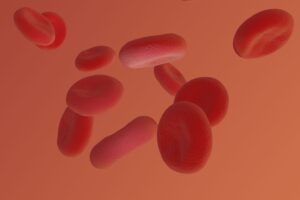Disclaimer: This article is for informational purposes only and is not intended to diagnose any conditions. LifeDNA does not provide diagnostic services for any conditions mentioned in this or any other article.
Spatial attention is the brain’s way of helping us focus on what matters in our surroundings. Whether it’s finding a familiar face in a crowded room or navigating through busy streets, spatial attention directs our focus to the right places at the right time. But have you ever wondered why some people seem naturally better at this than others?
What is Spatial Attention?
Spatial attention is a cognitive process that allows the brain to focus on specific locations or objects in the environment while filtering out irrelevant information. It is crucial for everyday tasks, such as driving, reading, or even recognizing familiar faces in a crowd. By directing mental resources to a particular space or object, spatial attention enhances an individual’s ability to process visual, auditory, and tactile stimuli efficiently.
This ability is linked to specific brain regions, particularly the parietal lobe, which helps coordinate how the brain processes space and attention. Studies using neuroimaging techniques, like fMRI, show that different brain areas activate when individuals engage in tasks requiring spatial focus.
Genetic factors also contribute to how spatial attention functions. Research indicates that certain genetic variations influence neurotransmitter systems, such as dopamine and acetylcholine, which play a critical role in attention and cognitive control. These genetic predispositions may explain why some people are naturally more adept at tasks requiring spatial awareness, while others might struggle.
Understanding the genetic basis of spatial attention may elucidate how people interact with their surroundings and how their genetic makeup could influence their cognitive habits and day-to-day experiences.
How Does Spatial Attention Work?
Spatial attention works by allowing the brain to prioritize certain areas or objects in the environment, filtering out distractions to focus on what is most relevant. This process is essential for tasks that require visual or sensory attention, such as identifying a stop sign while driving or locating a book on a crowded shelf.
The brain achieves this by activating certain regions, particularly the parietal lobe and the frontal eye fields, which are involved in processing spatial information. These areas help direct attention to specific locations or stimuli, whether it’s something seen, heard, or felt.
Spatial attention can be divided into two types: voluntary and reflexive. Voluntary attention is when someone consciously chooses to focus on something, like reading a page in a book. Reflexive attention happens automatically, such as when something suddenly catches the eye, like a flashing light.
Genetics also influences how spatial attention works. Certain variants in genes related to neurotransmitter activity can affect how well a person focuses on spatial tasks, highlighting the role of genetic predisposition in shaping everyday cognitive habits and behaviors.
What Other Factors Can Affect Spatial Attention?
While genetics play a significant role in shaping spatial attention, various other factors can also influence how effectively a person can focus on and process spatial information. These factors range from environmental influences to neurological conditions and lifestyle choices. Here are some key contributors:
Age
As people age, their cognitive abilities, including spatial attention, can decline. Research shows that older adults may experience slower processing speeds and reduced attentional capacity. The brain’s ability to filter out distractions and focus on relevant stimuli may weaken over time, affecting tasks like driving or navigating new environments. This decline is thought to be linked to changes in brain structure and neurotransmitter function as the brain ages.
Brain Injuries
Injury to specific brain regions, such as the parietal lobe, can lead to deficits in spatial attention. Conditions like traumatic brain injury (TBI) or strokes can damage the neural pathways responsible for processing spatial information. For example, individuals with damage to the right parietal lobe often experience spatial neglect, where they fail to attend to stimuli on one side of their environment.
Neurological Disorders
Certain neurological disorders can impact spatial attention. Attention-deficit/hyperactivity disorder (ADHD) is one such condition, where individuals may struggle to maintain focus, especially on spatial tasks. Similarly, disorders like Alzheimer’s disease, Parkinson’s disease, and schizophrenia can affect how the brain processes spatial information, leading to attentional deficits.
Stress and Fatigue
High levels of stress and fatigue can impair spatial attention. When the brain is under stress, it may prioritize perceived threats, making it harder to focus on less urgent stimuli. Fatigue also reduces cognitive performance, including staying alert and focused on spatial tasks. Studies have shown that sleep deprivation, in particular, negatively affects spatial attention and increases reaction times during tasks requiring focus.
Training and Experience
Spatial attention can be improved with practice and training. Research studies on athletes, for example, have shown that individuals engaged in sports requiring strong spatial awareness, such as basketball or soccer, often exhibit heightened spatial attention skills. Similarly, professions requiring frequent navigation or spatial tasks, like pilots or surgeons, tend to sharpen these cognitive abilities over time.
Environmental Stimulation
The environment in which a person lives can also influence spatial attention. Constant exposure to highly stimulating environments, such as bustling urban areas, may enhance spatial awareness by requiring individuals to constantly navigate and process information. On the other hand, living in a more isolated or less stimulating setting could potentially reduce the brain’s need to focus on spatial cues, affecting attention.
Nutrition
Certain nutrients play a role in cognitive health and attention. For example, omega-3 fatty acids, found in fish oil, have been shown to support brain function, including attention. Similarly, deficiencies in vitamins like B12 and folate can negatively impact cognitive abilities, potentially affecting spatial attention.
Physical Exercise
Physical activity, particularly aerobic exercise, has been linked to improvements in attention, including spatial attention. Exercise increases blood flow to the brain and supports neuroplasticity, the brain’s ability to form new neural connections. This can enhance cognitive functions like attention and focus.
While genetics is a crucial factor in determining spatial attention, other variables such as age, brain health, lifestyle choices, and environmental factors also play significant roles in shaping how individuals navigate and focus on the world around them. Understanding these influences can help people make informed choices to optimize their cognitive abilities.
What is an Example of Spatial Attention?
A practical example of spatial attention is when someone is driving a car and focuses on navigating through a busy intersection. In this scenario, spatial attention helps the driver concentrate on relevant information, such as traffic signals, road signs, and other vehicles, while ignoring irrelevant stimuli like pedestrians on the sidewalk or billboards.
During this task, the brain’s parietal lobe and frontal eye fields are actively engaged. These regions coordinate to prioritize visual information, allowing the driver to maintain focus on the critical aspects of the environment. The brain filters out distractions and enhances the processing of stimuli that are essential for safe driving, such as the position and movement of other vehicles.
Spatial attention is crucial for efficiently directing cognitive resources to areas where they are most needed, ensuring that the driver can respond quickly to changing conditions. This ability is influenced by various factors, including genetics, which can affect how well someone can maintain focus and process spatial information.
Is Spatial Attention the Same as Visual Perception?
Spatial attention and visual perception are related but distinct cognitive processes. Spatial attention refers to the brain’s ability to focus on specific locations or objects in the environment while ignoring others. It involves directing cognitive resources to particular spatial areas, which helps prioritize and process information efficiently. For instance, when searching for a friend in a crowded room, spatial attention enables an individual to focus on specific areas of the room, enhancing the likelihood of finding the friend amid the crowd.
Visual perception involves the interpretation and understanding of visual stimuli received from the eyes. It encompasses processes such as detecting colors, shapes, and motion and integrating this information to form a coherent visual representation of the surroundings. Visual perception is essential for recognizing objects, assessing their size and distance, and understanding their relationships within a visual scene.
While spatial attention can enhance visual perception by focusing on relevant information, they operate through different mechanisms. Spatial attention involves neural networks in the parietal lobe and frontal eye fields, which prioritize and filter visual input. Visual perception primarily involves the occipital lobe, where initial processing of visual information occurs.
Spatial attention helps manage where cognitive focus is directed, improving the efficiency of visual perception. While they are interrelated—spatial attention can enhance how well visual information is perceived—they are distinct processes with different roles in interpreting and interacting with the environment. Understanding these processes can shed light on how genetics might influence cognitive functions related to visual tasks and spatial awareness.
What is the Difference Between Spatial Attention and Object Attention?
The brain regions involved in spatial attention include the parietal lobe and frontal eye fields, which work to direct cognitive resources to specific spatial areas. Object Attention, on the other hand, refers to focusing on specific objects or features within a visual scene, regardless of their location.
This process allows individuals to selectively enhance the processing of particular objects, such as identifying a red car among many vehicles or distinguishing between different types of fruit on a table. Object attention is primarily mediated by the ventral visual pathway, including areas like the occipital and temporal lobes, which are responsible for recognizing and categorizing objects.
While both types of attention help manage visual information, they target different aspects. Spatial attention deals with where to focus, enhancing overall awareness of spatial locations, while object attention deals with what to focus on, improving the ability to recognize and evaluate individual objects.
These processes often work together to help individuals effectively interpret and respond to their environment. Understanding the distinction between them can reveal how genetics and other factors influence cognitive functions related to visual and spatial tasks.
Is Bad Spatial Attention Dangerous?
Poor spatial attention can indeed pose risks and have significant impacts on daily life. Spatial attention is crucial for effectively navigating and interacting with the environment. When spatial attention is compromised, individuals may struggle to focus on important details or locations, leading to various practical challenges.
For example, deficits in spatial attention can impair one’s ability to safely operate a vehicle. Research has shown that reduced spatial attention increases the risk of accidents because individuals may fail to notice important traffic signals or obstacles. This impairment can also affect everyday activities, such as reading, where difficulty focusing on specific lines or words can hinder comprehension.
Moreover, poor spatial attention is associated with certain neurological and psychological conditions. Individuals with attention-deficit/hyperactivity disorder (ADHD) or stroke-related spatial neglect often experience difficulties in maintaining focus on spatial tasks, which can impact overall quality of life and independence.
Understanding how genetics and other factors influence spatial attention is crucial for managing and mitigating these risks. Genetic variations, along with lifestyle factors like stress and sleep, can affect spatial attention abilities. Addressing these influences through targeted interventions or lifestyle adjustments can help improve spatial attention and reduce potential dangers associated with its deficits.
Ways to Improve Spatial Attention
Improving spatial attention can enhance everyday functioning and overall quality of life. Here are several methods to boost spatial attention:
Engage in Regular Physical Exercise
Physical activity has been shown to improve cognitive functions, including spatial attention. Aerobic exercises, such as running or cycling, increase blood flow to the brain and promote neuroplasticity, which can enhance attentional control. Studies suggest that regular exercise, particularly activities that involve complex movements and coordination, can lead to better spatial awareness and attentional capacity.
Practice Mindfulness and Meditation
Mindfulness and meditation techniques can improve spatial attention by training individuals to focus their mental resources more effectively. Research indicates that mindfulness practices enhance the ability to maintain attention and filter out distractions. Techniques such as focused breathing or body scans can help individuals become more aware of their spatial environment and improve their attentional skills.
Engage in Cognitive Training
Cognitive training exercises specifically designed to improve spatial attention can be beneficial. Games and tasks that require spatial reasoning, such as puzzles, mazes, or video games, can help strengthen attentional networks in the brain. Studies have demonstrated that regular practice with these types of tasks can lead to improvements in spatial attention and related cognitive functions.
Maintain a Healthy Diet
Nutrition plays a role in cognitive health and attentional capacity. Diets rich in omega-3 fatty acids, found in fish and nuts, have been linked to better cognitive function, including spatial attention. Antioxidants from fruits and vegetables also support brain health by reducing oxidative stress, which can positively impact attentional processes.
Get Adequate Sleep
Adequate and quality sleep is crucial for cognitive functions, including spatial attention. Sleep deprivation impairs attentional control and increases susceptibility to distractions. Studies show that proper sleep hygiene—such as maintaining a regular sleep schedule and creating a restful sleep environment—can enhance attentional abilities and overall cognitive performance.
Reduce Stress Levels
Chronic stress can negatively affect spatial attention by impairing cognitive functions and increasing distractions. Techniques for managing stress, such as relaxation exercises, deep breathing, and time management strategies, can help maintain attentional focus. Reducing stress through lifestyle adjustments can improve spatial attention and overall cognitive health.
Practice Visual and Spatial Skills
Engaging in activities that specifically target visual and spatial skills can help improve spatial attention. Activities like map reading, navigation exercises, and spatial reasoning games train the brain to process and focus on spatial information more effectively. Regular practice with these skills can lead to better spatial attention over time.
Monitor and Manage Health Conditions
Certain health conditions, such as ADHD or neurological disorders, can impact spatial attention. Managing these conditions through medical treatment and behavioral interventions can improve attentional abilities. For individuals with specific conditions, working with healthcare professionals to address underlying issues can enhance spatial attention and overall cognitive function.
Incorporating these strategies into daily life can help individuals improve their spatial attention, making it easier to navigate their environment and perform everyday tasks effectively. Understanding how various factors influence spatial attention, including genetics and lifestyle choices, allows for a more targeted approach to enhancing cognitive abilities.
Summary
- Spatial attention helps people focus on important details in their surroundings, like finding a familiar face in a crowded room.
- It is a cognitive process that allows the brain to filter out irrelevant information and concentrate on specific objects or locations.
- Spatial attention is linked to brain regions like the parietal lobe, which coordinates how the brain processes space and attention.
- Genetics plays a role in how spatial attention works, with certain genetic variations influencing neurotransmitter systems like those of dopamine and acetylcholine.
- These genetic predispositions may explain why some people are naturally better at tasks requiring spatial awareness.
- Spatial attention helps people stay aware of their environment, making it easier to process visual, auditory, and tactile stimuli efficiently.
- Differences in spatial attention abilities, influenced by genetics, can affect how people interact with their surroundings, from driving to recognizing faces.
- Studies using neuroimaging techniques show that different brain areas activate during spatial tasks, highlighting the importance of these regions in focusing attention.
- Understanding the genetic basis of spatial attention elucidates how individual genetic makeup influences everyday cognitive habits, attentional control, and behaviors.
You may also like: Demystifying the Genetics of Sensitivity to Stimuli
References
- https://www.sciencedirect.com/topics/engineering/spatial-attention
- https://www.ncbi.nlm.nih.gov/pmc/articles/PMC6170011/
- https://my.clevelandclinic.org/health/articles/22581-dopamine
- https://my.clevelandclinic.org/health/articles/24568-acetylcholine-ach
- https://my.clevelandclinic.org/health/body/24628-parietal-lobe
- https://iastate.pressbooks.pub/individualfamilydevelopment/chapter/introduction-to-cognitive-development-in-late-adulthood/#:~:text=The%20processing%20speed%20theory%2C%20proposed,working%20memory%20becomes%20less%20efficient.
- https://www.ninds.nih.gov/health-information/disorders/traumatic-brain-injury-tbi
- https://www.psychiatry.org/patients-families/adhd/what-is-adhd#:~:text=Attention%2Ddeficit%2Fhyperactivity%20disorder%20(ADHD)%20is%20one%20of,in%20the%20moment%20without%20thought).
- https://www.cdc.gov/aging/aginginfo/alzheimers.htm#:~:text=Alzheimer’s%20disease%20is%20the%20most,thought%2C%20memory%2C%20and%20language.
- https://www.mayoclinic.org/diseases-conditions/parkinsons-disease/symptoms-causes/syc-20376055
- https://www.ncbi.nlm.nih.gov/pmc/articles/PMC7674527/
- https://www.ncbi.nlm.nih.gov/pmc/articles/PMC5444361/
- https://www.sciencedirect.com/science/article/abs/pii/S0272494421000827
- https://www.verywellmind.com/best-sources-of-fish-oil-1067008#:~:text=and%20fortified%20foods.-,Mental%20Health%20Benefits%20of%20Fish%20Oil,impact%20brain%20health%20throughout%20life.
- https://www.ncbi.nlm.nih.gov/pmc/articles/PMC5903566/
- https://www.sciencedirect.com/topics/psychology/visual-perception
- https://www.sciencedirect.com/topics/veterinary-science-and-veterinary-medicine/object-based-attention
- https://www.ncbi.nlm.nih.gov/pmc/articles/PMC3448564/
- https://www.healthline.com/health/spatial-awareness
- https://www.apa.org/monitor/2012/07-08/ce-corner#:~:text=Researchers%20theorize%20that%20mindfulness%20meditation,to%20effective%20emotion%2Dregulation%20strategies.
- https://www.medicalnewstoday.com/articles/brain-exercises
- https://www.ncbi.nlm.nih.gov/pmc/articles/PMC7674527/
- https://www.hopkinsmedicine.org/health/conditions-and-diseases/neurological-disorders










